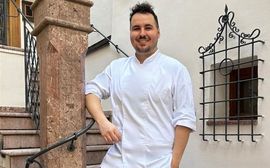Food Trends 2025

Global Food Trends 2025
Global food trends are derived from the major social developments that can be observed around the world. Although efforts vary from country to country, a general shift towards greater sustainability can be observed.
The food trends are correspondingly ecological: More and more people are now eating a vegetarian or vegan diet. When they do eat meat, consumers are paying more attention to how the animals are reared, the origin and quality of the meat. Food waste is also viewed much more critically today than it was ten years ago, leading to the increased use of the whole animal or vegetable when cooking.
However, it is not only environmental concerns that are leading to more sustainable food consumption globally, but also increased health awareness. Non-alcoholic or low-alcohol beverages are becoming more popular, which in turn leads to a more flexible and creative range. The days of large daily meals also seem to be over, as these are considered intolerable and are a hindrance to today's often fast-paced and erratic lifestyle.
Regional Food Trends 2025
Unlike global food trends, regional food trends can be traced back to cultural or regional circumstances and can differ greatly from one another when viewed from a global perspective. At Platzl, we naturally orient ourselves to the Alpine, Bavarian and Munich trends.
A food trend in our region continues to be the local sourcing of food. Short transportation routes protect the environment, long-term supplier relationships promote the regional economy and proximity increases confidence in the food. The latter brings us to the next regional trend: guests in Bavarian restaurants today want to know much more frequently where the products come from, how the food is prepared and what nutritional profile is behind it. Transparency is an important keyword in this context.
Another trend is known as “local exotics”: Almost forgotten local vegetables and herbs such as the ancient carrot, topinampur or dandelion are celebrating a renaissance in Alpine kitchens. Incidentally, these are also foods that chefs like to integrate into the emerging vegetarian gourmet cuisine. What has long been practiced in the Isar metropolis as well as in other large cities - urban gardening - is now also being discovered by Munich restaurants.
Current food trends in Platzl gastronomy
At breakfast and banqueting in the Platzl Hotel as well as in the Pfistermühle, Josefa and Ayinger Wirthäuser restaurants, a sense of tradition meets innovation. Accordingly, we consciously weigh up which trends we want to follow. For example, we have a strong focus on the sustainable use of food and eating in general.
The use of regional foods is firmly anchored in the entire Platzl gastronomy, and has been for years. It goes without saying that we openly communicate where we source our products from and the details behind them. The vegetarian and vegan offerings are already impressive and are also gaining relevance for us - in the Pfistermühle, gourmet cuisine is now also vegetarian.
We hope this brief excursion into Christopher's trend research has inspired you to explore Munich's gastronomic landscape with a keen eye this year. Perhaps we'll see you soon in one of our establishments.
